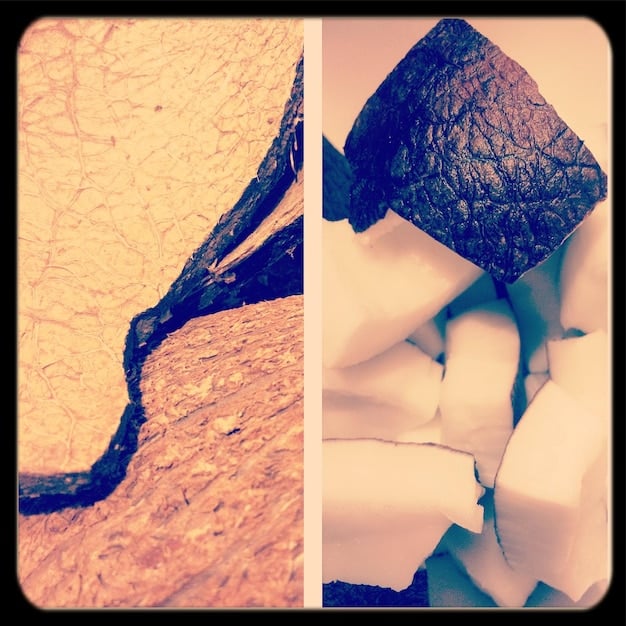How to Use Primary Sources Effectively in Academic Research

How to Effectively Use Primary Sources in Academic Research: A Comprehensive Guide explores the fundamental aspects of primary sources, including identifying, locating, analyzing, and integrating these materials into academic research.
Are you looking to enhance your academic research with authentic, first-hand evidence? Understanding how to effectively use primary sources in academic research: a comprehensive guide is crucial. This guide will provide you with the skills and knowledge to find, analyze, and integrate these sources into your work effectively, setting your research apart.
Understanding primary sources: what are they?
Primary sources are the bedrock of original research, offering direct insights into the past or a phenomenon. But what exactly constitutes a primary source? It’s essential to grasp this concept before delving deeper.
Defining primary sources
Primary sources are original materials that provide firsthand accounts or direct evidence concerning a topic under investigation. These sources were created during the time period or event being studied.
They offer unfiltered perspectives and allow researchers to form their own interpretations based on direct evidence.
Examples of primary sources
The types of primary sources can vary widely, depending on the field of study. Some examples include:
- Historical Documents: Letters, diaries, manuscripts, legal documents, and official records
- Creative Works: Novels, poems, plays, musical scores, and artwork
- Empirical Studies: Research reports, datasets, survey results, and experimental findings
- Personal Accounts: Autobiographies, interviews, oral histories, and personal correspondence
Recognizing these different forms can help guide your research process effectively.
In summary, understanding what constitutes primary sources is essential for effective academic research. These direct, firsthand accounts offer a level of authenticity and insight that secondary sources cannot replicate, making them invaluable for in-depth investigation and analysis.

Identifying relevant primary sources
Once you know what primary sources are, the next step is to identify which are most relevant to your research. This involves a strategic approach to ensure you’re focusing on materials that will contribute meaningfully to your study.
Using library databases
One of the best places to begin your search is through library databases. These databases often contain digitized primary source materials or indexes that can point you to relevant collections.
Many academic libraries subscribe to specialized databases that focus on specific types of primary sources.
Exploring archives and special collections
Archives and special collections housed in libraries, museums, and historical societies are treasure troves of primary source material. These collections often contain unique and rare items that are not available elsewhere.
- Visit in Person: Whenever possible, visit archives and special collections in person to examine materials firsthand.
- Online Catalogs: Explore online catalogs and finding aids to get a sense of what the archive holds.
- Contact Archivists: Don’t hesitate to contact archivists for assistance. They are experts in their collections and can provide valuable guidance.
By actively searching and exploring collections, researchers can uncover invaluable primary sources that can significantly enrich their academic work.
Analyzing primary sources critically
Analyzing primary sources critically is vital to ensure that you understand their context, purpose, and potential biases. This process will significantly improve the quality and depth of your academic research.
Assessing authenticity and reliability
Before relying on a primary source, it’s important to determine if it is authentic and reliable. Consider these questions:
- Provenance: Can you verify the source’s origin and chain of custody?
- Authorship: Who created the source, and what were their qualifications or biases?
- Context: Under what circumstances was the source created, and how might this have influenced its content?
Answering these questions will help you assess whether the source is trustworthy and suitable for your research.
Understanding historical context
To truly understand a primary source, you need to understand the historical context in which it was created. This involves examining the social, cultural, and political factors that influenced the source.
Consider the perspectives of the people involved and how their beliefs may have shaped the source.
Identifying biases and perspectives
Every primary source is created from a particular perspective and may contain biases. Identifying these biases is crucial for interpreting the source accurately.
Understanding these nuances will lead to a more nuanced and informed interpretation of primary sources.
By following these steps, you can ensure that you are analyzing primary sources critically and extracting valuable insights for your academic research.

Integrating primary sources into your research
Integrating primary sources into your research effectively involves more than just quoting them. It requires careful consideration of how the sources support your arguments and add depth to your analysis.
Developing a thesis based on primary sources
Primary sources can be instrumental in shaping your thesis. By examining them closely, you can identify patterns, themes, and contradictions that can inform your central argument.
Allow the primary sources to guide your thinking and refine your thesis.
Using quotes and citations effectively
When incorporating primary sources into your writing, use quotes selectively and purposefully. Choose quotes that are particularly insightful or that directly support your claims.
Proper citation is essential to give credit to the original creators and to avoid plagiarism.
Writing a compelling analysis
Your analysis of primary sources should go beyond simply summarizing their content. Aim to provide your own interpretation and draw connections between the sources and your thesis.
Consider the broader implications of your findings and how they contribute to the existing body of knowledge.
Overall, integrating primary sources effectively involves careful selection, thoughtful analysis, and clear communication of your findings. This approach will enhance the depth and credibility of your academic research.
Ethical considerations when using primary sources
Researchers must adhere to ethical standards to ensure proper respect and acknowledgment are given to the sources they use, as well as those who created them.
Respecting intellectual property rights
Respecting intellectual property rights is a fundamental ethical consideration when using primary sources. This includes properly citing sources and obtaining permission when necessary.
Be aware of copyright laws and fair use guidelines.
Ensuring privacy and confidentiality
When working with primary sources that contain personal or sensitive information, it’s essential to protect the privacy and confidentiality of individuals. This may involve anonymizing data or obtaining consent before publishing sensitive details.
- Data Anonymization: Remove or alter personal identifiers to protect individuals’ identities.
- Informed Consent: Obtain consent from individuals before disclosing sensitive information about them.
- Secure Storage: Store sensitive data securely to prevent unauthorized access.
Protecting privacy not only demonstrates ethical responsibility but also ensures the integrity and reliability of your research.
Avoiding misrepresentation and fabrication
Misrepresenting or fabricating primary sources is a serious ethical violation. Researchers must accurately represent the content and context of sources and avoid manipulating them to support their own biases.
Upholding these ethical considerations will ensure the integrity and credibility of your academic work.
Common pitfalls to avoid when using primary sources
Even experienced researchers can encounter pitfalls when using primary sources. To avoid these issues, it’s essential to be aware of common mistakes and how to prevent them.
Overreliance on secondary sources
While secondary sources can provide valuable context, relying too heavily on them can limit the originality and depth of your research. Make sure to engage directly with primary sources to form your own interpretations.
Balance your use of secondary sources with a thorough examination of relevant primary sources.
Ignoring contradictory evidence
It’s tempting to focus only on primary sources that support your thesis, but ignoring contradictory evidence can lead to biased conclusions. Be open to considering all available evidence, even if it challenges your assumptions.
This approach will strengthen the validity and credibility of your research.
Misinterpreting sources due to lack of context
Without appropriate context, it’s easy to misinterpret primary sources. Take the time to research the historical, social, and cultural factors that influenced the creation of the source.
Understanding the context will help you avoid drawing inaccurate conclusions.
By being mindful of these common pitfalls, researchers can enhance the quality and integrity of their work.
| Key Point | Brief Description |
|---|---|
| 🔍 Identifying Sources | Use library databases and archives to find relevant materials. |
| 📚 Critical Analysis | Assess the authenticity and historical context of each source. |
| ✍️ Integration | Ensure your thesis is supported by quotes and proper citations. |
| ⚖️ Ethical Use | Respect intellectual property rights and ensure privacy. |
Frequently Asked Questions
▼
Examples include letters, diaries, government documents, photographs, and original research data. These provide firsthand accounts or direct evidence related to a topic or event.
▼
Check if the source was created during the time period you’re studying. It should be an original document or firsthand account rather than an analysis or interpretation.
▼
They offer unfiltered perspectives and direct evidence, allowing researchers to develop their interpretations and gain a deeper understanding of the subject matter.
▼
Follow citation guidelines (MLA, APA, Chicago) for each source. Include details such as author, title, date, and repository information for accurate attribution.
▼
Many libraries, archives, and digital repositories offer free access to digitized primary source collections. Search online for open access resources relevant to your topic.
Conclusion
Effectively using primary sources in academic research enhances the depth, credibility, and originality of your work. By understanding their nature, identifying relevant materials, analyzing them critically, and integrating them ethically, you can make a valuable contribution to your field of study.





